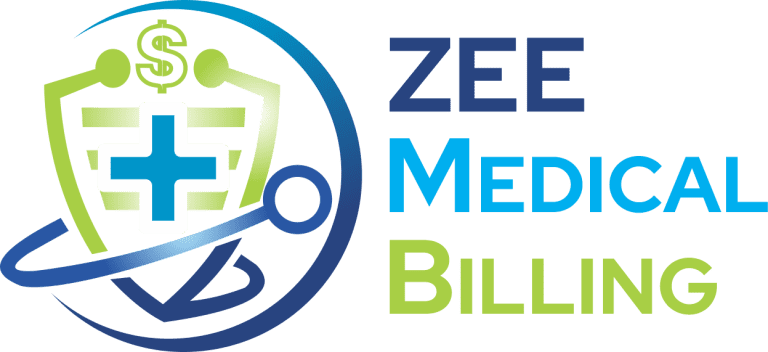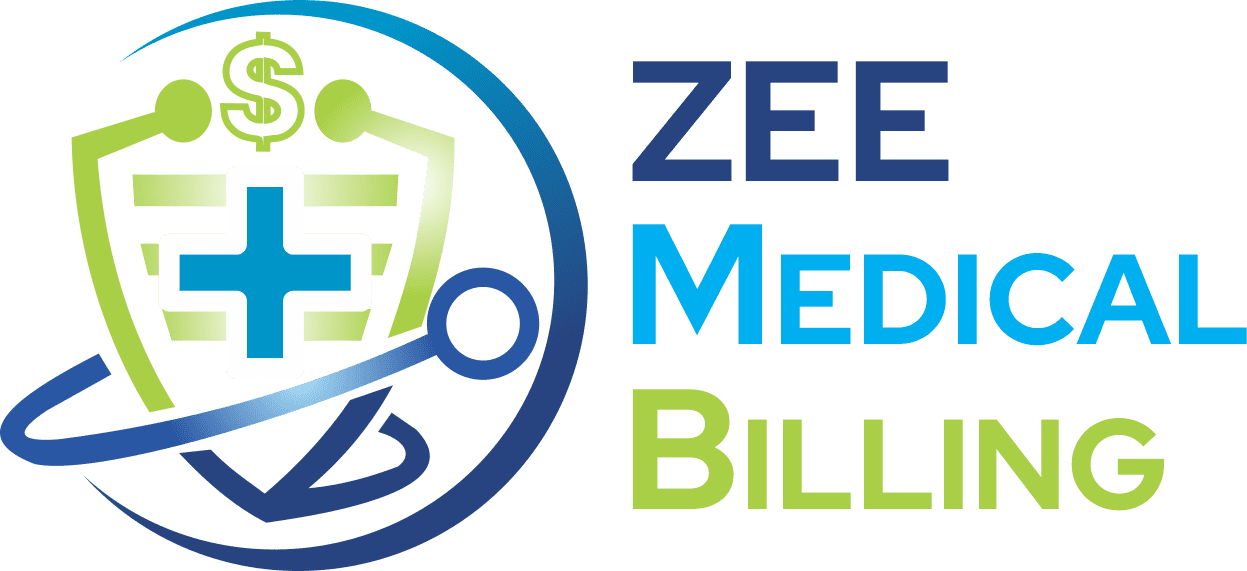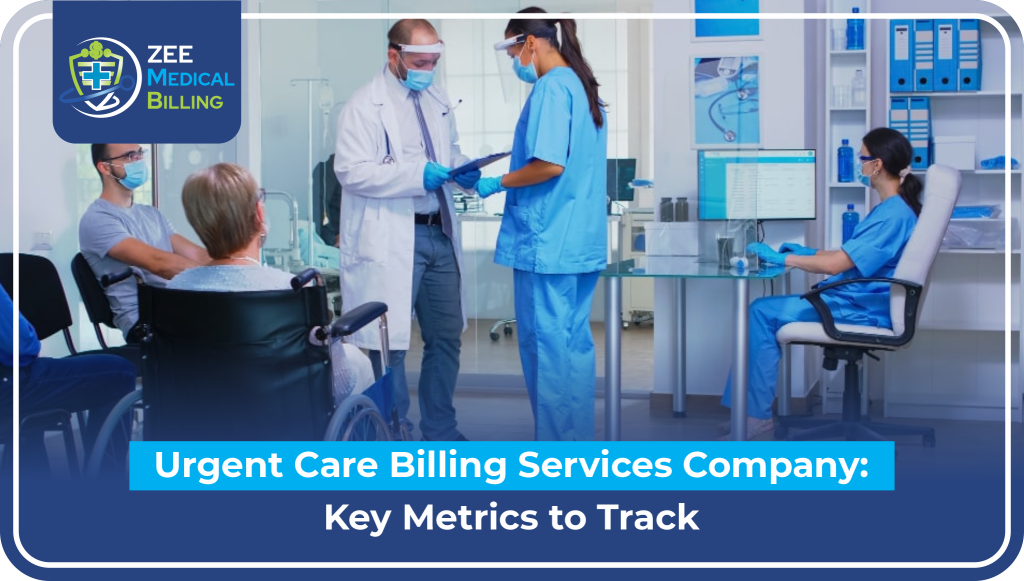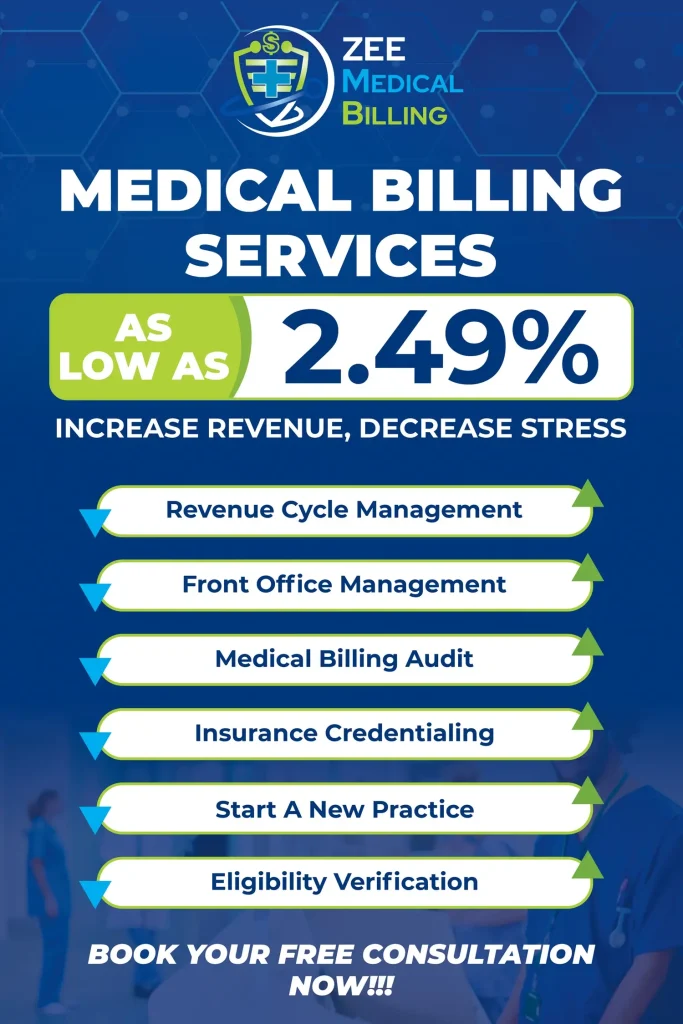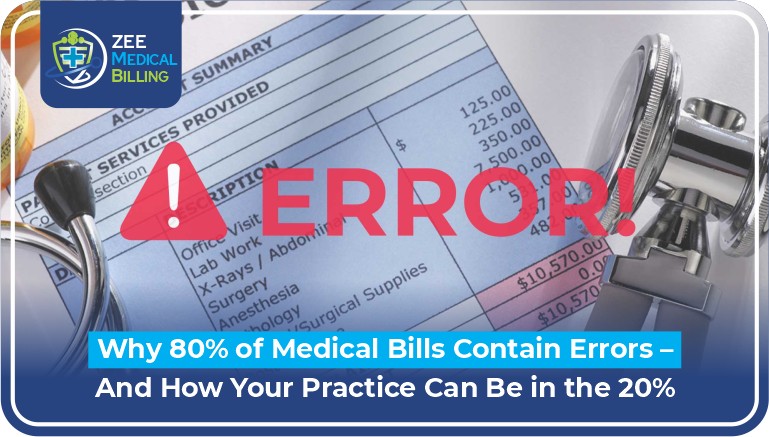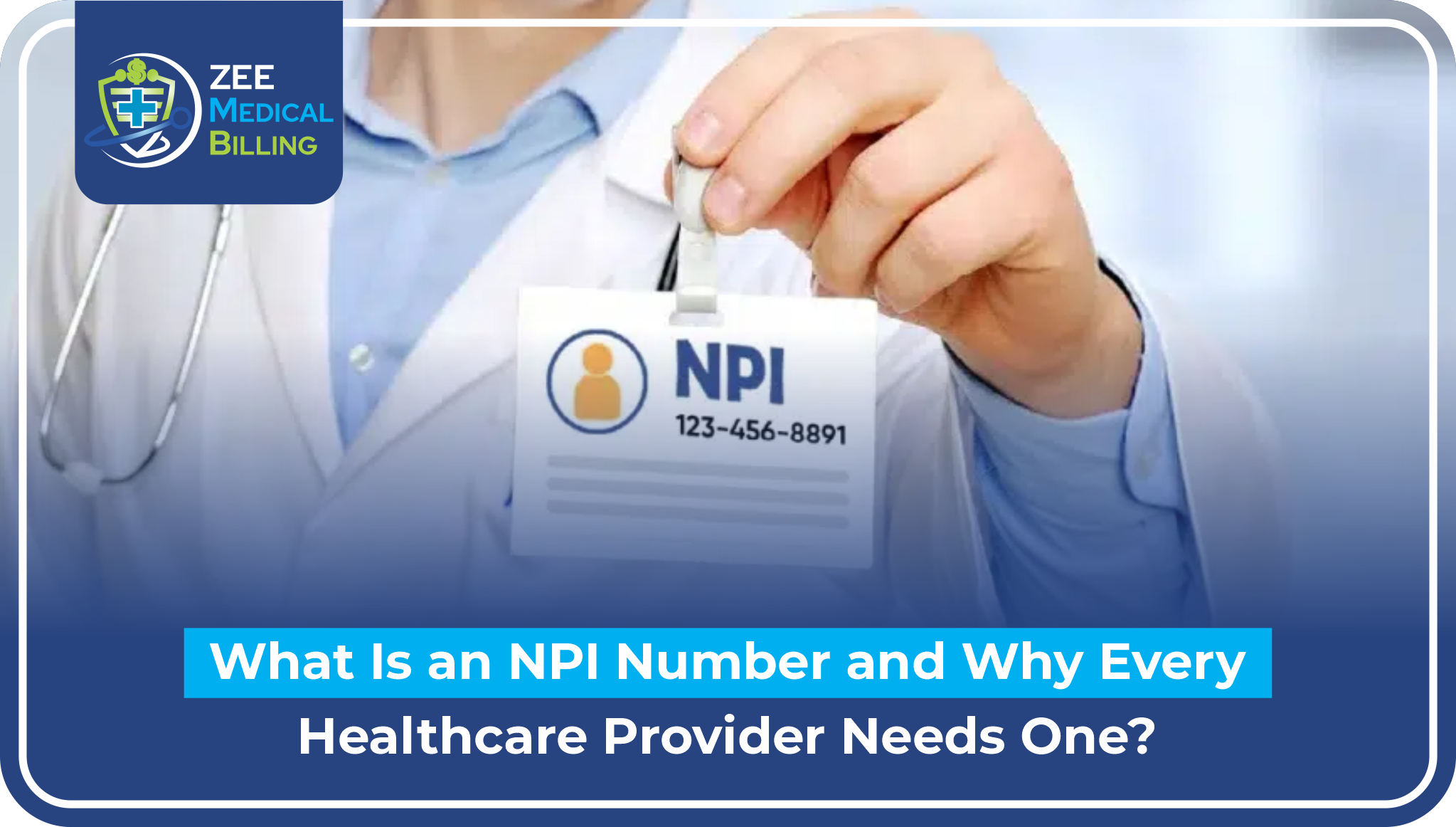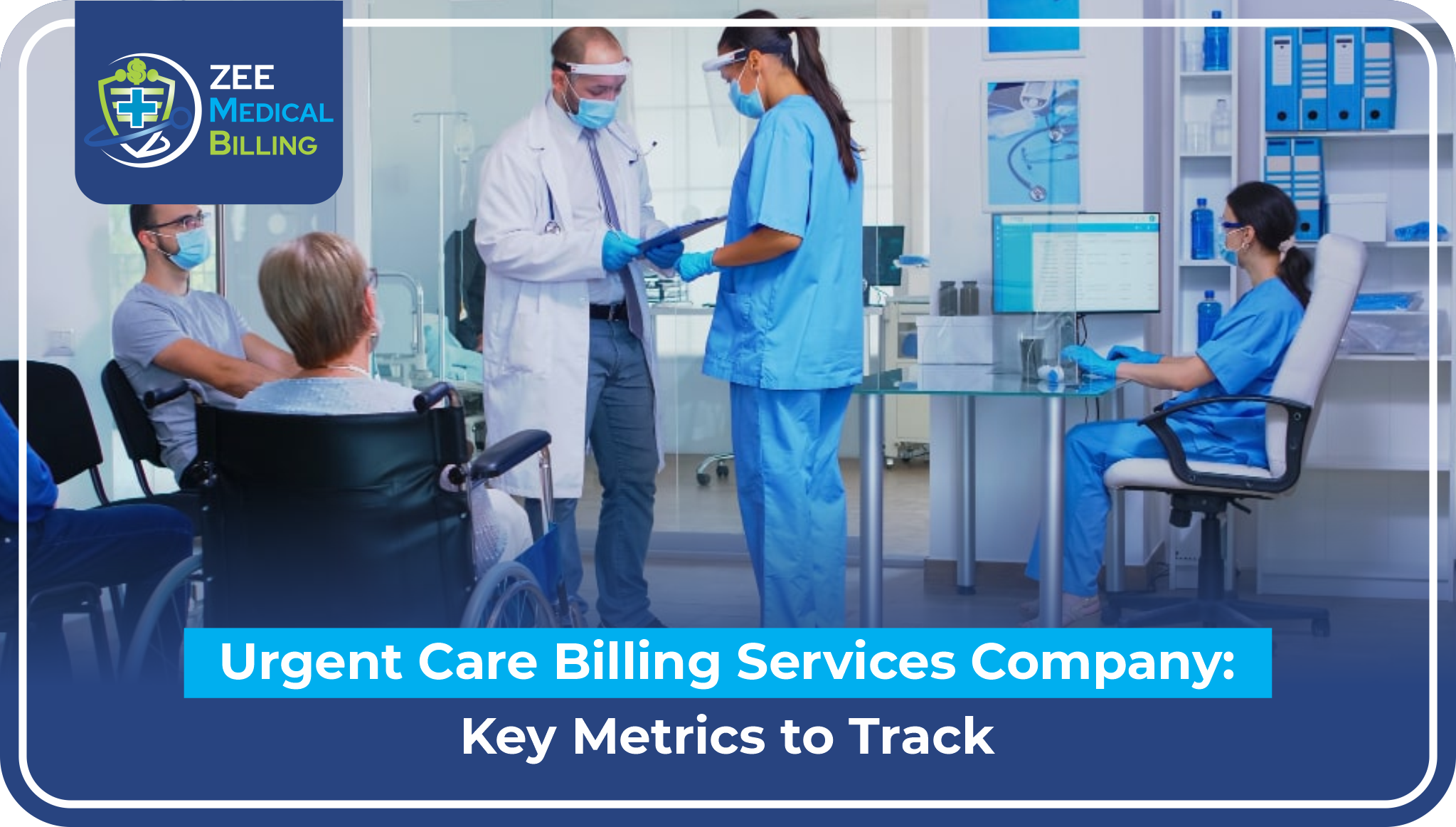Urgent Care Billing Services Company: Key Metrics to Track
Running an urgent care center means juggling rapid patient turnover, diverse service offerings, and complex billing scenarios all while trying to maintain healthy cash flow. Without tracking the right metrics, you’re essentially flying blind, making decisions based on gut feelings rather than data. That’s why understanding which metrics an urgent care billing services company should track becomes critical for financial health and operational excellence.
Why Metrics Matter for Urgent Care Billing
The Unique Billing Challenges of Urgent Care
Urgent care billing presents distinct challenges that make metrics tracking particularly important:
High Patient Volume: Rapid turnover means hundreds of encounters monthly, each requiring accurate billing
Service Diversity: From simple sick visits to laceration repairs, X-rays, and occupational health, service mix impacts reimbursement patterns
Insurance Variety: Patients present with commercial insurance, Medicare, Medicaid, workers’ compensation, and self-pay, each with different billing requirements
Walk-In Nature: Limited ability to verify insurance or obtain authorizations before treatment
Extended Hours: Evening and weekend operations create staffing and operational complexities
These factors create billing complexity that demands systematic tracking. Without metrics, problems compound invisibly until they create cash flow crises.
Data-Driven Decision Making
Metrics transform gut feelings into objective reality. They answer critical questions:
- Is your collection rate improving or declining?
- Which payers pay fastest and most reliably?
- What denial reasons occur most frequently?
- Are staff capturing charges completely?
- Is your billing operation performing above or below industry benchmarks?
An urgent care billing services company uses these metrics to identify problems early, implement targeted improvements, and demonstrate measurable results. As detailed in resources about urgent care medical billing services, comprehensive metrics tracking separates high-performing operations from struggling ones.
Essential Financial Metrics
Collection Rate
Collection rate measures the percentage of expected reimbursement actually collected. This is arguably the single most important metric for urgent care financial health.
Formula: (Total Payments Collected / Total Charges Billed) × 100
How to Calculate and Improve Collection Rate
Calculating collection rate accurately requires accounting for contractual adjustments, the difference between billed charges and contracted reimbursement rates. A practice might bill $200 for a service but contract rates only allow $120. The $80 difference isn’t lost revenue; it’s contractual adjustment.
Adjusted Collection Rate = (Payments Collected / [Charges – Contractual Adjustments]) × 100
Healthy urgent care practices typically achieve collection rates of 95-98%. Anything below 90% indicates significant revenue leakage requiring immediate attention.
Improving collection rate requires addressing:
- Incomplete charge capture
- Coding errors causing underpayment
- Denial issues not being appealed
- Ineffective patient collections
- Lack of follow-up on unpaid claims
Net Collection Rate
Net collection rate excludes contractual adjustments and charity care, providing the purest measure of collection effectiveness.
Formula: (Payments / [Charges – Contractual Adjustments – Charity Care]) × 100
This metric shows how effectively you’re collecting what payers actually owe after contractual agreements are considered. It eliminates the noise from charges that were never collectible.
Gross Collection Rate
Gross collection rate includes everything, all charges billed versus all payments received, without adjusting for contractual allowances.
Formula: (Total Payments / Total Charges) × 100
While less precise than net collection rate, gross collection rate helps track overall revenue trends and compare performance across time periods.
Days in Accounts Receivable
Days in A/R measures how long it takes to collect payment after services are rendered. Lower numbers indicate faster cash conversion.
Formula: (Total A/R / [Average Daily Charges])
Healthy urgent care operations maintain days in A/R below 30-35 days. Numbers exceeding 45 days indicate collection problems, claims sitting unpaid, denials not being worked, or inadequate follow-up processes.
Tracking days in A/R by aging categories reveals where problems concentrate:
- 0-30 days: Normal processing timeframe
- 31-60 days: Requires follow-up attention
- 61-90 days: Problem accounts needing intervention
- 90+ days: Significantly harder to collect; may require write-off consideration
Operational Efficiency Metrics
First-Pass Claim Rate
First-pass rate measures the percentage of claims paid on initial submission without requiring corrections or resubmission.
Formula: (Claims Paid on First Submission / Total Claims Submitted) × 100
High-performing urgent care billing services companies achieve first-pass rates of 95% or higher. Lower rates indicate systematic problems:
- Incorrect patient information
- Coding errors
- Missing authorizations
- Incomplete documentation
Each claim requiring resubmission delays payment by weeks or months, damaging cash flow and increasing administrative costs.
Claim Denial Rate
Denial rate measures the percentage of submitted claims rejected by payers.
Formula: (Denied Claims / Total Claims Submitted) × 100
Industry benchmarks suggest denial rates should remain below 5-10% for urgent care. Higher rates signal significant problems requiring immediate attention.
Analyzing Denial Reasons
Raw denial percentages tell only part of the story. Analyzing specific denial reasons reveals root causes:
Common Urgent Care Denial Reasons:
- Registration errors (incorrect insurance information)
- Missing or invalid authorizations
- Service not covered under patient’s plan
- Duplicate claim submission
- Timely filing deadline exceeded
- Medical necessity not established
Tracking denial reasons by frequency identifies which issues create the most financial impact, enabling targeted improvement efforts.
Clean Claim Rate
Clean claim rate measures claims accepted by payers without any errors requiring correction.
Formula: (Clean Claims / Total Claims Submitted) × 100
Clean claims pass all payer edits and begin processing immediately. “Dirty” claims get rejected for errors, requiring staff time to correct and resubmit. Target clean claim rates exceed 95%.
Average Time to Payment
This metric tracks elapsed time from service date to payment receipt.
Formula: Sum of (Payment Date – Service Date) for all paid claims / Number of paid claims
Average time to payment varies by payer, commercial insurance typically pays within 15-30 days, while Medicare processes within 14-21 days. Tracking by payer identifies which insurers pay slowly, enabling targeted follow-up.
Patient-Focused Metrics
Point-of-Service Collections
Point-of-service (POS) collections measure payments collected at the time of service versus total patient responsibility.
Formula: (Payments Collected at Time of Service / Total Patient Financial Responsibility) × 100
High-performing urgent care centers collect 80-90% of patient responsibility at time of service through effective front-desk processes. Collections made later through statements are significantly more difficult and expensive.
POS collections require:
- Accurate eligibility verification identifying patient responsibility
- Clear communication about costs before treatment
- Multiple payment options (cash, card, payment plans)
- Staff trained in financial conversations
- Technology enabling quick payment processing
Patient Responsibility Collection Rate
This measures success collecting from patients after services are rendered.
Formula: (Patient Payments / Total Patient Responsibility) × 100
Urgent care centers struggle more with patient collections than insurance collections. Patients often lack HSA balances or deductibles to cover services, making collection challenging. Target patient collection rates of 70-80% represent strong performance.
Patient Satisfaction with Billing
While harder to quantify, patient satisfaction with billing processes impacts collections and reputation. Surveys or Net Promoter Scores specific to billing experience reveal whether patients understand their bills and find the payment process easy.
Dissatisfied patients complain publicly, damage online reviews, and avoid returning for future care. Quality billing creates positive patient experiences that support practice growth.
Payer-Specific Performance Metrics
Reimbursement Rate by Payer
Tracking actual reimbursement by payer reveals which insurance companies pay best and worst.
Analysis: Average Reimbursement per Encounter by Payer
This analysis might reveal that Blue Cross reimburses $150 per level-3 visit while Aetna reimburses $135 for identical services. Understanding these patterns informs strategic decisions about payer contracting and network participation.
Authorization Approval Rate
For services requiring pre-authorization, tracking approval rates by payer identifies which insurers approve readily versus those denying frequently.
Formula: (Authorizations Approved / Total Authorization Requests) × 100
Low approval rates with specific payers may indicate problems with how requests are submitted or may reveal payers creating inappropriate barriers. As discussed in key insights for 2025, authorization management significantly impacts urgent care revenue.
Payer Mix Analysis
Understanding your payer mix, the percentage of revenue from each payer source, helps predict cash flow and identify dependency risks.
Example Payer Mix:
- Commercial Insurance: 55%
- Medicare: 20%
- Medicaid: 15%
- Self-Pay: 7%
- Workers’ Compensation: 3%
Significant changes in payer mix signal market shifts requiring operational adjustments. Over-dependency on any single payer creates vulnerability if contracts change or patients shift to competitors.
Compliance and Documentation Metrics
Coding Accuracy Rate
Coding accuracy measures how frequently the correct CPT and ICD-10 codes are assigned to encounters.
Measurement: Regular audits comparing assigned codes to documentation
Coding errors create multiple problems:
- Undercoding leaves money uncollected
- Overcoding creates compliance risks and audit exposure
- Incorrect diagnosis codes cause medical necessity denials
Target coding accuracy rates exceed 95%. Regular audits by certified coders identify patterns requiring education or process changes.
Documentation Completion Rate
This measures whether provider documentation is complete and timely.
Formula: (Encounters with Complete Documentation / Total Encounters) × 100
Incomplete documentation delays billing, creates denial risks, and exposes compliance vulnerabilities. Best practices require documentation completion within 24-48 hours of encounters.
Compliance Audit Score
Regular internal compliance audits assess adherence to billing regulations, payer policies, and documentation standards.
Audit scores typically range 0-100%, with scores above 90% indicating strong compliance. Lower scores reveal specific areas requiring attention, perhaps evaluation and management level selection, modifier usage, or medical necessity documentation.
Benchmarking Your Urgent Care Billing Performance
Industry Standards for Urgent Care
Understanding how your metrics compare to industry benchmarks reveals whether your performance is strong or needs improvement:
Urgent Care Industry Benchmarks:
- Collection Rate: 95-98%
- Days in A/R: 30-35 days
- Denial Rate: 5-10%
- First-Pass Rate: 90-95%
- Clean Claim Rate: 95%+
- POS Collection Rate: 80-90%
Performance significantly below these benchmarks indicates opportunities for improvement. An urgent care billing services company provides expertise to bring performance to or above industry standards.
Setting Realistic Goals
While benchmarks provide guidance, goals should be realistic based on current performance. If your denial rate is 25%, aiming for 5% immediately is unrealistic. Instead, set progressive goals: reduce to 20% within three months, then 15% within six months, working toward the 5-10% benchmark over time.
Goal-setting should be:
- Specific: “Reduce denial rate to 15%” versus “improve denials”
- Measurable: Quantifiable metrics track progress objectively
- Achievable: Realistic given current resources and constraints
- Relevant: Aligned with overall practice financial goals
- Time-Bound: Defined deadlines create accountability
Technology Metrics
Electronic Claim Submission Rate
This measures the percentage of claims submitted electronically versus paper.
Formula: (Electronic Claims / Total Claims) × 100
Electronic submission is faster, cheaper, and more accurate than paper claims. Target electronic submission rates approach 100%, with paper claims reserved only for rare situations requiring manual handling.
System Uptime and Integration
For practices using integrated systems, tracking uptime and integration functionality ensures billing operations aren’t disrupted by technical failures.
Metrics to Track:
- System uptime percentage (target: 99.5%+)
- Integration error rates between EHR and billing systems
- Time to resolve technical issues
- User satisfaction with billing technology
Technology failures create billing delays, increase errors, and frustrate staff. Monitoring these metrics ensures technology supports rather than hinders billing operations.
How an Urgent Care Billing Services Company Tracks These Metrics
Professional urgent care billing services companies implement systematic tracking through:
Dashboard Reporting: Real-time visibility into key metrics accessible to practice management
Automated Data Collection: Systems automatically capture data rather than relying on manual tracking
Regular Reporting Cadence: Weekly or monthly reports showing trends over time
Benchmarking: Comparison to industry standards and similar urgent care centers
Root Cause Analysis: Investigation when metrics fall outside acceptable ranges
Action Planning: Specific interventions to improve underperforming metrics
ZEE Medical Billing provides comprehensive urgent care billing services with detailed metrics tracking and transparent reporting that keeps practices informed about their financial performance.
Improving Performance Based on Metrics
Tracking metrics is only valuable if you act on the insights they provide. When metrics reveal problems:
For Low Collection Rates:
- Audit coding to identify undercoding patterns
- Implement systematic denial appeals processes
- Improve patient collection procedures
- Enhance staff training on charge capture
For High Denial Rates:
- Analyze denial reasons to identify patterns
- Improve front-end verification processes
- Enhance documentation standards
- Implement denial prevention protocols
For Slow Days in A/R:
- Implement systematic claim follow-up procedures
- Address aged accounts more aggressively
- Improve clean claim rates to reduce rework
- Evaluate staffing adequacy for follow-up work
For Poor Payer Performance:
- Negotiate better contract terms
- Consider network status changes
- Implement payer-specific protocols addressing known issues
- Escalate persistent problems to payer representatives
ZEE Medical Billing’s Approach to Metrics
ZEE Medical Billing provides specialized urgent care billing services with comprehensive metrics tracking as a core service component.
Their approach includes:
Comprehensive Dashboard: Real-time access to all key metrics with drill-down capabilities
Regular Reporting: Monthly detailed reports with trend analysis and benchmarking
Proactive Alerts: Notification when metrics fall outside acceptable ranges
Root Cause Analysis: Investigation of underperforming metrics with specific improvement recommendations
Transparent Communication: Regular discussions about performance with practice management
Proven Results: Track record of improving metrics for urgent care clients
Resources on urgent care medical billing services and 2025 key insights demonstrate their commitment to data-driven urgent care billing excellence.
Conclusion
Tracking the right metrics transforms urgent care billing from a mysterious black box into a transparent, manageable operation. Key financial metrics like collection rates and days in A/R reveal overall financial health. Operational metrics such as denial rates and clean claim rates show process efficiency. Patient and payer metrics provide insights into specific revenue sources.
An urgent care billing services company provides expertise not just in processing claims but in tracking, analyzing, and improving these critical metrics. Without systematic measurement, urgent care centers operate blindly, discovering problems only after they’ve devastated cash flow.
ZEE Medical Billing exemplifies this metrics-driven approach through comprehensive urgent care billing services that provide transparency, accountability, and measurable results.
Your expertise lies in providing excellent urgent care to your community. Let billing specialists handle the metrics tracking and financial optimization so you can focus entirely on patient care.
FAQs
1. What’s the most important metric for urgent care billing performance?
Collection rate is arguably most important, as it directly measures your success converting services into collected revenue. However, no single metric tells the complete story. Comprehensive evaluation requires tracking collection rates, denial rates, days in A/R, and first-pass rates together. These metrics interact since high denial rates damage collection rates and increase days in A/R, so monitoring multiple metrics provides the clearest picture of billing health.
2. How often should urgent care centers review billing metrics?
Key metrics should be reviewed monthly at minimum, with some tracked weekly or even daily. Critical metrics like days in A/R, denial rates, and collection rates warrant monthly review with management. Operational metrics like daily charge capture and claim submission should be monitored weekly. Real-time dashboard access enables daily spot-checking of crucial indicators. Regular review enables early problem identification before small issues become financial crises.
3. What collection rate should urgent care centers target?
Healthy urgent care operations achieve net collection rates of 95-98%. Anything below 90% indicates significant revenue leakage. Gross collection rates (including contractual adjustments) typically range 35-55% depending on payer mix. Focus on net collection rate as your primary target, as it most accurately reflects collection effectiveness after accounting for contractual adjustments that were never collectible.
4. How can urgent care centers improve their denial rates?
Reducing denials requires addressing root causes through comprehensive insurance verification before treatment (or immediately after for walk-ins), proper authorization obtaining for services requiring approval, accurate charge capture and coding, complete documentation supporting medical necessity, staff training on common denial reasons, and systematic denial analysis identifying patterns. Professional billing services implement these processes systematically, typically reducing denial rates by 50% or more.
5. What’s a realistic timeframe for improving billing metrics?
Initial improvements typically appear within 30-60 days of implementing systematic changes like better verification processes, improved coding practices, and enhanced denial management. Significant improvement requires 90-180 days as process changes take effect, staff are trained, and claim backlogs are worked. Mature optimization continues over 12+ months as best practices become embedded in daily operations. Realistic goal-setting accounts for these timelines, expecting progressive improvement rather than overnight transformation.
Follow Us
- Instagram: @zee_medical_billing
- Facebook: ZeeMedicalBilling
- YouTube: Zee Medical Billing Channel
- Twitter/X: @BillingZee
- LinkedIn: Zee Medical Billing Company
